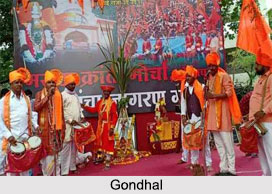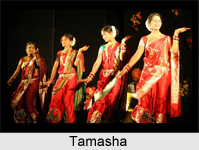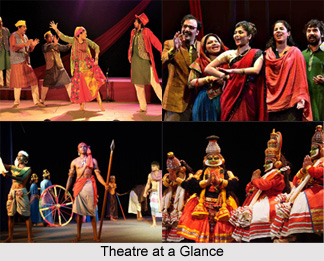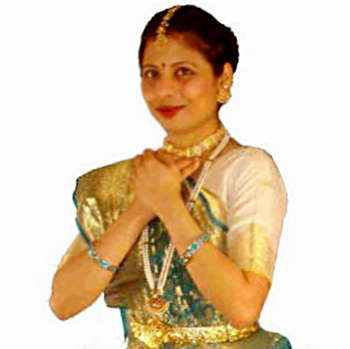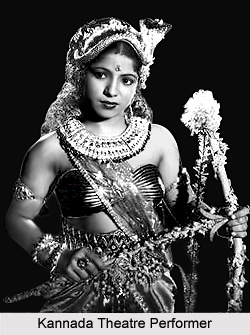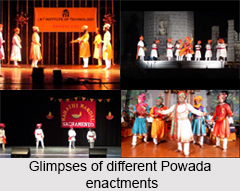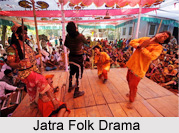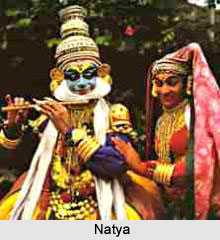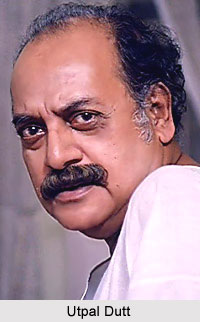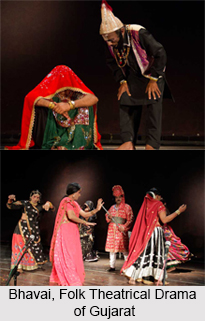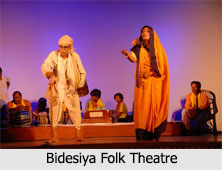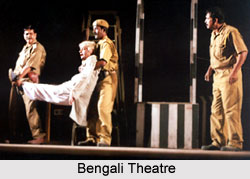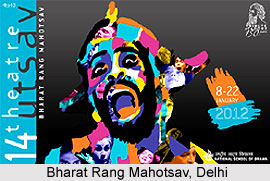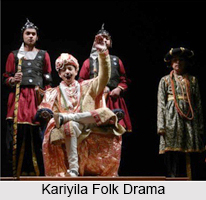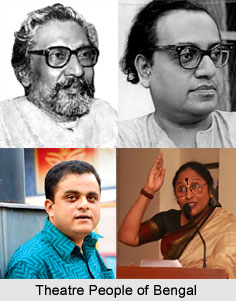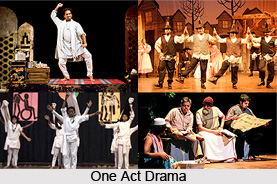 One Act Play in Amateur Theatre has been a thriving act for a long time, and almost every playwright of Karnataka wrote some one-acts in addition to his full-length plays. The one-act is a direct and fast-running short play with a few special characteristics like speedy action, economy in expression and a final impressive climax. A particular act detached from a full length play can not be a one-act. For, the one-act is like a golden ring rather than a detached link of a gold chain. It should have a dramatic theme as its first requisite and be bound by the three Unities of Time, Place and Action. It must be direct in dealing with a theme and full entertainment in a short span of time.
One Act Play in Amateur Theatre has been a thriving act for a long time, and almost every playwright of Karnataka wrote some one-acts in addition to his full-length plays. The one-act is a direct and fast-running short play with a few special characteristics like speedy action, economy in expression and a final impressive climax. A particular act detached from a full length play can not be a one-act. For, the one-act is like a golden ring rather than a detached link of a gold chain. It should have a dramatic theme as its first requisite and be bound by the three Unities of Time, Place and Action. It must be direct in dealing with a theme and full entertainment in a short span of time.
Inaugurated by Tollu-Gatti of Kailasham in Mysore and by Goal of D. R. Bendre in North Karnataka, the one-act has remained the most popular of dramatic forms on the Amateur stage. It comes in handy for an anniversary or a College Day, when the number of players available is small and the time allotted for entertainment short. More than all, no great problems arise in its production. It has been essentially social in theme, humorous in nature and often intellectual in import. T.P. Kailasam, Sriranga, Kuvempu, Karanth, Bendre, Krishnarao, M. N. Kamat, Krishnakumar Kallur, Mugali, Chi. Sadasiviah and other senior and leading playwrights wrote a good number of one-acts Prominent among more recent but established playwrights of one-acts is Ksheera Sagara, who, with his fine sense of humour and expert knowledge of stage-craft, soon made himself very popular with plays like Shamannana Sahasa, Deepavali, Nischitdrtha and Kashiyatre. Kaiwar Rajarao who excels in homely dialogues wrote entertaining plays like Gandana Julmane, Patra Pramada, Hengasara Banddya and Prema Pareekshe. N.K. Kulkarni a popular playwright of North Karnataka, well-known as a humorist, poked gentle fun at human foibles with his one-acts like B. T. Buddhivanta, U. T. C. Parishat, Bar Room and Vidya. M. N. Babu, author of a few penetrating plays like Raghannana Ratha drew both a smile and a tear at the same time. His Bddige Meese, Guru Bhayankara and Cinema Aliya are truly hilarious. N. Kasturi gave a few brilliant pieces like Gaggayyana Gadibidi, Vaikunta and Kadane. M. V. Sitaramiah, Tengse Govindarao, N. M. Kulkarni and other playwrights enriched Kannada dramatic literature with their one-acts. The one-act proved to be the ideal form for modern times and it had no difficulty in thriving along with the Cinema. It has been most popular with the student amateurs. It has grown both in volume and variety, touching almost every aspect of modern life, like meaning of education (Tollu Gatti, B. T. Buddhivanta, Adbhuta Shikshana and other plays) evils of ignorance (Katte Purdna, Aadaddenu, Purvaranga and other plays), the problem of unemployment of the educated ( Sarkassina Sarasvati, Bar room, Trisula, Nannadalla and other plays), the question of unequal marriage (Ammavra ganda, Hennina Todaku, Asvamedha and other plays) and a variety of domestic and social problems (Home rule, Prapanca Pravdha, Bahiskdra, Ndlkaneya Pisachi and other plays). The total number of one-acts written during these three decades may have well exceeded three hundred.
The one-act plays, all the same, has not been an unmixed blessing. Its dramatic requirements do not appear to have been properly appreciated by quite a number of its practitioners; secondly, the amateur stage seems to have become too much satisfied with the one-act. It has also given room to a feeling that the satisfaction it gives is a false satisfaction. This feeling is possibly due to the consideration that the one-act, and sometimes even the full-length social play, is incapable of building up a "classical" atmosphere of dignity and power, availing itself of all the fine arts that go to make a true drama the time honoured natya. It is not far from truth, that it looks as though the lofty institution of the theatre has been made to hang on to the thin purpose of light humour, when the one-act play becomes the chief vehicle for the stage There are brilliant exceptions of course, like Bahishkar, Kapatanataka Nadumaneyalli, Hosa Samsara or Bidugade, but, for such exceptions, one has to go back to the pioneers alone. Many other social plays are incapable of giving any satisfaction.
